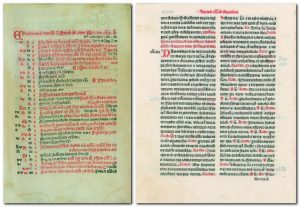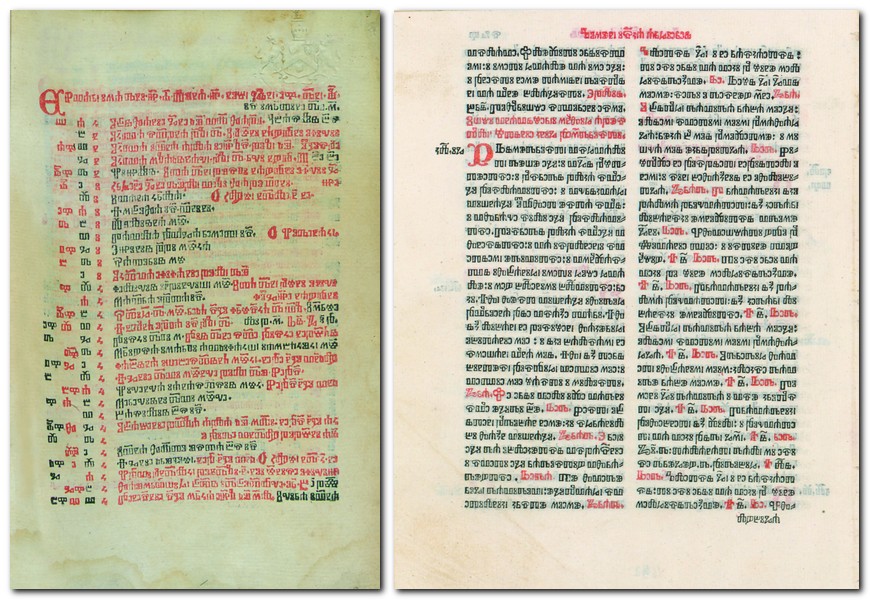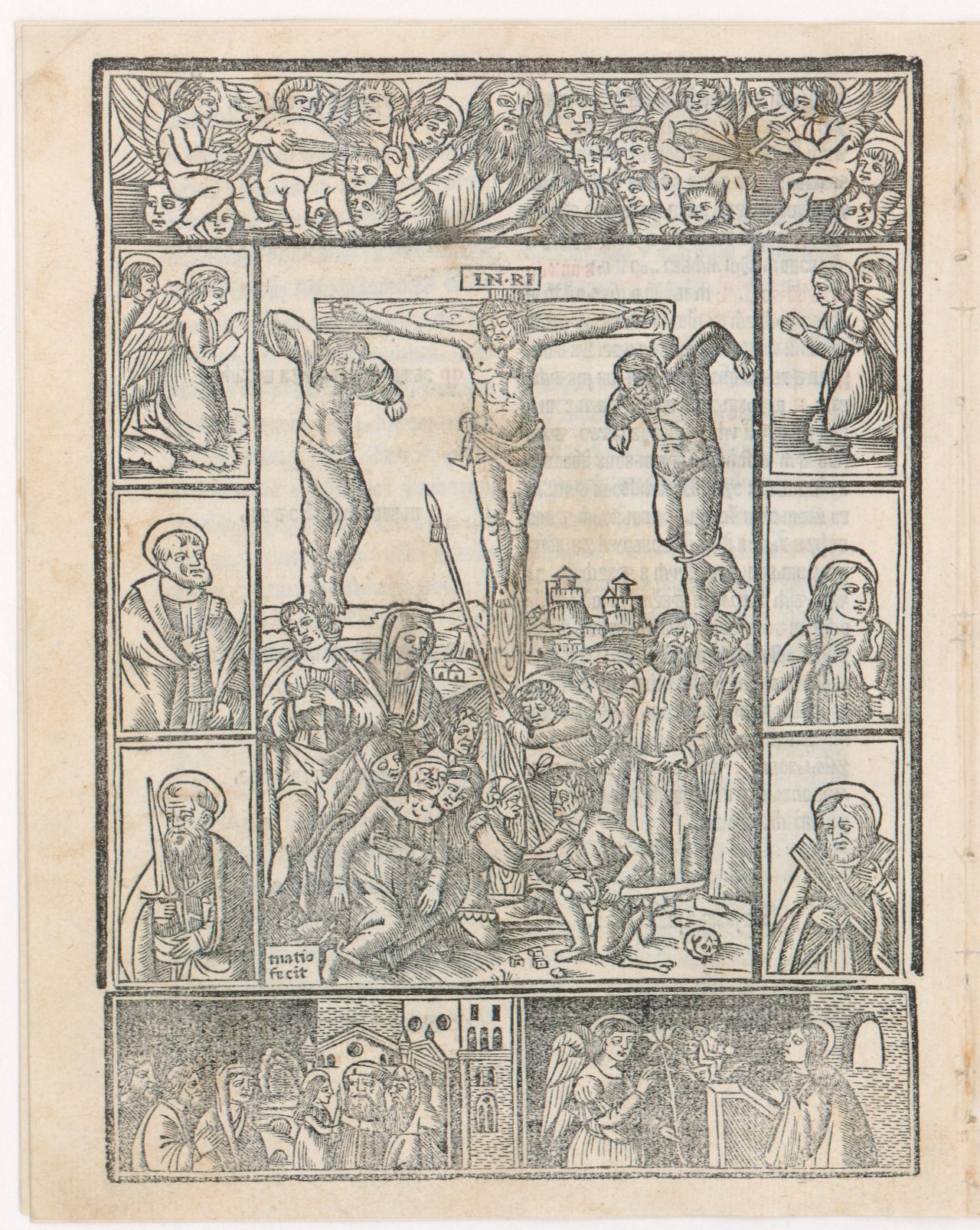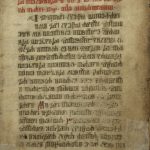The oldest printed books earned the name in which scarcely anybody will recognize the hidden metaphor. The 15th century in Europe saw the movable type printing of the books which were made and finished manually, without the mechanics and machines available today, when we tend to think we could not imagine life without them. The books were called incunabula according to the Latin name for a cradle. The parable of books printed in the dawn of the new era, that will begin with the Gutenberg galaxy, with the earliest age of human life, the first of a total of seven acts – as described by the genius Shakespeare in the work “As you like it” – was created on the wings of optimism and assuming that human, moving from one phase to another, matures and progresses. If books of the earliest period of printing can be compared with infancy and cradle in human life, this does not mean that they are less valuable than books printed using machine techniques or that they do not present, in terms of their production, real small pieces of artwork. Of course, if we keep in mind that the entire book-making process was hand-made, and that
the printed sheets were put together to form a book sheet, which would lack geometric regularity in the letters’ order and in their proper setting in lines. The books from the early period of European printing, though lacking the sophistication of books printed using machine techniques, today still impress us with their preserved printed letters and paper. Letters or lines that seem unusual, irregular or clumsy in comparison with the letters and lines in machine-printed books can only reinforce the already strong impression on the skillfulness of the then, often unsigned, letter cutters and printers, who put great effort so that the book may see the light of day. It is hard to avoid the impression that the word incunabula, coined in the 17th century (Bernard von Mallinckrodt), contains less admiration and joy for the technological innovation put into the service of printing books than in the euphoric note of žakan Juraj, who in the 1482 Codex of Prince Novak left a written record about «our printing that grows up». Mallinckrod’s metaphor on early printed books must have been deprived of negative connotations contained in the mute and weak age of human being with which we compare the first printed books in Europe.
Glagolitic letters, together with Latin ones, marked the early period not only of Croatian but of the entire European printing industry as well. They were carved, cast and printed at the same time as the Latin letters, contained in the printed books throughout the European printing centers in the dawn of the new era. Even six books were printed using Glagolitic script before the year of 1500, including four liturgical books and two books with a moral and didactic purpose. These masterpieces were made and printed in two Glagolitic printing houses working in Siena and Venice. Reliable source is found in the colophons of the three Glagolitic incunabula, two of which were printed in Senj and one in Venice. The Glagolitic Missa from 1494 and the work entitled Spovid općena were printed in Senj, while the breviary from 1493 was printed in Torresani’s Venetian printing house. Unfortunately no data were preserved on the printing location of the two liturgical books, the 1483 missal and the 1491 breviary. In the colophon of the 1483 missal, there was no mention of the printing location, while it was not possible to find it for the 1491 breviary since the only preserved copy was flawed.

Brozić Breviary, 1561, National and University Library in Zagreb, Manuscripts and Old Books Collection, RIIA-16°-9 • Pavao Modrušanin’s Missal, 1528, National and University Library in
Zagreb, Manuscripts and Old Books Collection, RIIA-8°-9
The work of the Senj and then of the Rijeka printing houses marked the transition from the 15th to the 16th century. Seven books were printed in the Senj printing house, in the home of Silvestar Bedričić, including two liturgical books: the missal from 1494 and the ritual from 1507 or 1508. The remaining five books contain the then popular literary works translated into Croatian. The short-term activity of the Rijeka Glagolitic printing house of Šimun Kožičić Benja marked the fourth decade of the 16th century. In Kožičić’s printing house, a total of six Glagolitic books were printed, including one missal, printed in 1531. The Glagolitic printing house in Urach operated from 1561 to 1565, at a time when Europe was shaken by strong conflicts between Catholics and Reformers/Protestants. Fourteen Glagolitic books from the printing house in Urach represent a valuable venture which, because of its displacement from main printing centers and because of long distance, could not have had the influence that it would have had if being carried out in the area closer to the Croatian countries.
By accident or not, the last Glagolitic missal in the Croatian redaction was published in 1561, the same year when Glagolitic printing house in Urach was open. An attempt of the Franciscan Franjo Glavinić to start with printing Glagolitic books in Rijeka in the 17th century ends with a failure. After that for two centuries Glagolitic books will be published by the Roman printing house of the Congregation for the Doctrine of the Faith. By the very end of the 19th century Krk’s Bishop Antun Mahnić starts a printing house on Krk, which was active entire two decades, until the Bishop’s death in 1920. It was also the last link in the Glagolitic printing chain, operating with interruptions from the beginnings of movable type printing in Europe until the beginning of the 20th century. The longest activity saw the Roman printing house of the Congregation for the Doctrine of the Faith, while other Glagolitic printing houses were of short duration. Although the Glagolitic printing houses in Senj, Rijeka, Urach, and Krk were active for a relatively short period, they printed significant works of European liturgical and other literature, which all fulfilled their fundamental purpose for which they were printed and typeset by diligent hands of the individuals, among which only the rare ones left a permanent trace of themselves, «to avoid the vain glory».
Irena Galić-Bešker, PhD
National and University Library in Zagreb






